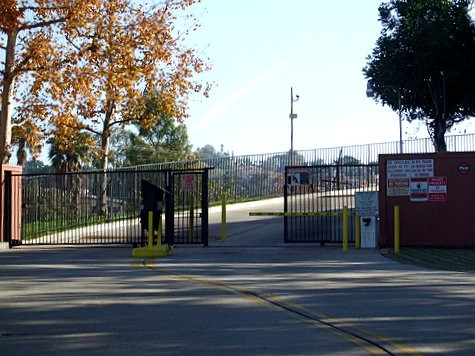
Via Fast Company via @urbandata). Cul-de-sacs are a dying phenomenon.
Years ago, I had to cut short a trip to Hawaii for an emergency appendectomy. Yeeouch. As I lay wincing in pain post-surgery, I asked my doctor what causes appendicitis. "Fecal matter," he said, sheepishly. "The appendix is a sac with a narrow opening at only one end, and any blockage can cause things to fester inside." Yes. I am opening with a bowel metaphor.
Nature is wildly diverse, and everything in it continuously flows; any one thing allowed to fester in isolation eventually becomes toxic. We know this in our bones. Water cycles through the earth + sky; the food chain is a never-ending game of dog-eat-dog. And yet we continue to do things in defiance of those instincts, growing monoculture crops, sitting way too much, getting all OCD with zoning + winding up with boring little pockets of homogeneity. All with slowly disastrous results.
One denial of instinct is the cul-de-sac. When I was little these dead-end streets were havens for baseball, since they were always devoid of activity. Problems arose when exiting one — you had to be careful with the fast traffic streaming just outside its narrow opening, especially when fielding errant balls. There was a big difference in speed where the vacuum of the cul-de-sac interfaced with the rest of the moving world, and that difference meant danger.
Overdesigned, over-intellectualized suburbia is famous for such strict compartmentalization of mental states: a play area, for play only; a business park, with no other facilities besides office space; a cul-de-sac, serving the four houses along its end bulb and no one else. Wherever these highly specialized zones touch, anxiety lies — the transitions are too sharp, the contrasts too great. Walking becomes a solitary test of nerves, and people turn to the car instead for even the smallest errands.
Sparkly new suburbs today are variations on an obsessive theme set in reaction to the urban squalor of yore — which I totally get — but it's been taken too far for too long at the expense of common sense. Of course cramming 100 houses' worth of traffic through a gated community's choke point will be super annoying, for instance. Of course designing fast six-lane roads along pointlessly windy trajectories will only increase the chances of blind-corner collisions, and not slow traffic down as intended. It's all so much urban turd-polishing, kind of like the absurdist designer ducts in the movie Brazil, and flies in the face of how people have built cities for centuries before the advent of the Industrial Revolution and car culture: slowly, through an ad-hoc, motley pragmatism, and with a million different ways to get to the same destination. Instead of concentrating commerce + traffic in the hermetically sealed pressure point that is the shopping mall or supermarket (ever wonder where aisle rage comes from?), our ancestors distributed all that infrastructural weight all over the country at a human, local scale. Not only is this widespread diversity more in touch with nature's evolutionary processes, they add up to a world that's simply more enjoyable. Whenever I wonder if what I'm doing is true to instinct, I ask myself: "Am I having as much fun for as much of the day as possible? If not, how can I engineer my world to squeeze the most joy out of it?"
English not your first language? Translate this page.





